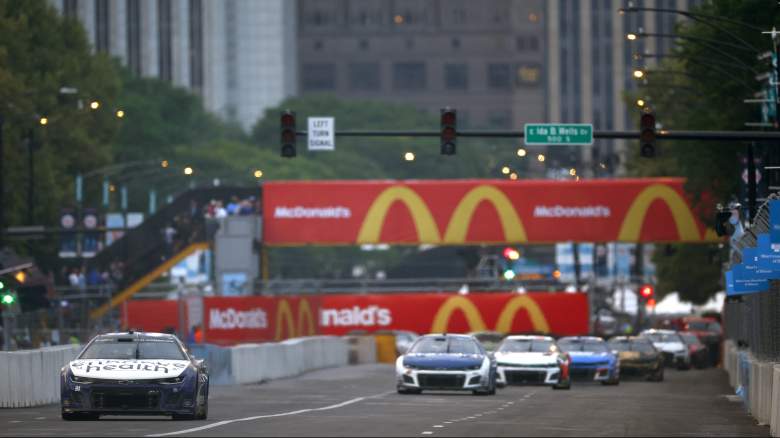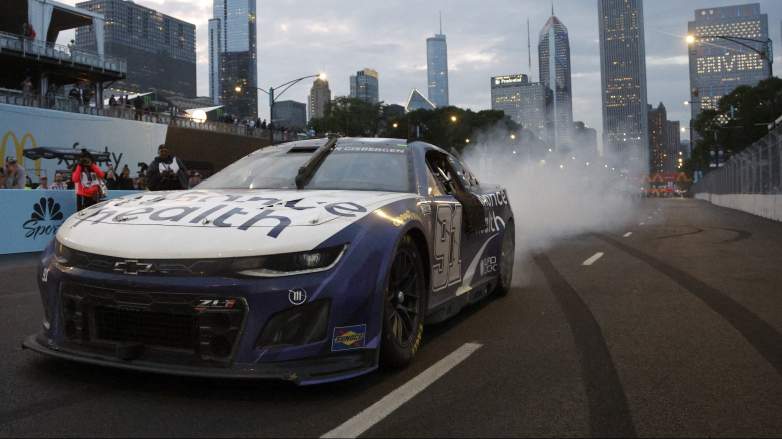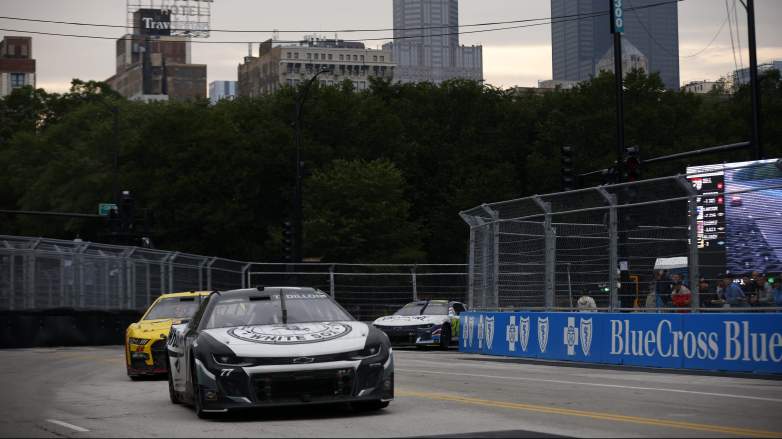
NASCAR’s weekend in Chicago was a wild and wet event with one race that failed to reach its halfway point and another that featured a first-time winner. There were high and low points alike, but it was a success overall.
The action on the track headlines the list of good moments. There was trepidation heading toward the race weekend because both the Xfinity Series and Cup Series drivers were taking on this purpose-built track for the first time. Some drivers talked about the potential for chaos and indicated that both races could turn into “survival.”
The action on the track was something else entirely. Drivers in both series raced with respect and they traded positions on the track while taking advantage of multiple passing zones.
There were incidents in the Cup Series, such as a multi-car collision that briefly blocked the track, but the drivers walked away far more optimistic about future street races after seeing that there were lead changes and exciting moments.
“It was an amazing experience and I hope everybody here enjoyed it as much as I did,” Kyle Larson said after the race. “I hope the fans here that maybe had never been to a race before enjoyed it.
“I hope the city enjoyed it enough to welcome us back because I felt like the buzz around the city the last handful of days was amazing. The crowd stuck around the whole race too. I mean, it was downpouring all race long and I was not sure what kind of crowd we were going to have once we got going and it was great.”
“I really hope we come back,” added Austin Cindric. “The city of Chicago, everything that NASCAR has done to do this for the first time, I give it an A-plus by both parties. I think we all really enjoyed it and I think that we know it would have been bigger without the weather and with the concerts.
“I was watching the whole race and people started coming back. By the end of the race, we had people lining fences on both sides every corner, so it’s cool to see. We have a lot of momentum in the sport, but I hope we come back.”
The Major Negative Was the Weather

GettyShane van Gisbergen does a burnout in Chicago.
The fan reception in Chicago and the action on the track both delivered for NASCAR and the teams. However, the weather created some negative moments for both series.
The Xfinity Series drivers, in particular, only completed 25 of the scheduled 55 laps before lightning strikes brought out the red flag. NASCAR then had to postpone the race to the morning of July 2 as the forecast called for more lightning in the area.
The drivers were not able to get back on track due to a historic amount of rainfall in the city. NASCAR’s crews could not clear the standing water and create a surface where the drivers could take advantage of the wet-weather package.
Instead of getting back to racing, the Xfinity Series teams had to head home after spending an extra night in costly hotels. This was not an ideal situation considering that the overall purse was only $1,627,771. This was much lower than the $7,565,807 purse for the Cup Series race.
“It’s just frustrating because the decision that was made today could have been made yesterday,” Alpha Prime Racing’s Tommy Joe Martins told Fronstretch after NASCAR called the race.
The heavy rainfall also affected the Cup Series race. The originally scheduled distance was 100 laps, but NASCAR shortened it to 75 laps. This late change became an advantage for Justin Haley, Kyle Busch, Chase Elliott, and other drivers that chose to pit earlier in the race.
The late change also negatively impacted Christopher Bell, who had swept the first two stages. He had to make a pit stop with the other leaders, which buried him in the field. Bell then crashed while trying to regain his lost position.
Crew chief Adam Stevens told Racer’s Kelly Crandall that it was “complete negligence” by NASCAR to make that late call, which benefited other drivers. There were other crew chiefs that expressed frustration about the late notice after the race.
“Yeah, I would say there was a lot of thought put into that decision,” NASCAR COO Steve O’Donnell said after the race. “At the time we made it, we waited as long as possible to see if we could get all 100 laps in. When we knew that wasn’t possible, we waited, we closed pit road.
“We wanted to make sure everybody knew what the race distance was going to be. Everyone had a chance to come in, pit the car, get fuel. We wanted to take fuel mileage out of it. I think we’ve had conversations with some who may have thought it was unfair who pitted on the same lap that the leader did and won.”
“I think we’re more than comfortable with the way the decision was made in this case. Certainly, it can be second-guessed anytime you have to do this, but I feel like the process played out well.”
Along with the impact on the races, the weather disrupted the “event” portion of the weekend. NASCAR scheduled four major concerts for the weekend — Charley Crockett, The Chainsmokers, Miranda Lambert, and The Black Crowes.
Only one of these took place due to the weather, which left many attendees frustrated. The drivers noticed, and they expressed hope that future street course weekends will play out much better.
“I think that the weekend was such a great opportunity to put on a really good show, and hopefully we did,” Michael McDowell said. “You know, I hate it for all the fans –– missing all the concerts and all the extra activities. But, glad we got the race in. We all fought hard there.”
Bonus Points for the Restarts

GettyTy Dillon (front) races on the streets of Chicago.
The weekend in Chicago delivered for some people, and it failed to excite others. There were numerous factors that had an impact on the opinions of everyone involved.
One thing that must be mentioned is the change that NASCAR made for the Cup Series race. The decision-makers opted to use single-file restarts as the drivers took on the wet track, and they continued using them all afternoon.
These single-file restarts — when paired with the location of the start-finish line — led to tamer restarts overall. There wasn’t the chaos that is prevalent at Circuit of the Americas and Indianapolis Motor Speedway’s road course, which potentially helped draw in first-time race attendees.
Double-file restarts create excitement on the oval tracks regardless of length, but they tend to create issues on tracks with 90-degree turns. Single-file restarts can lead to cleaner restarts, especially in overtime.
“I thought the single-file restarts was definitely the way to go,” Kyle Busch said in a press conference after delivering a top-five finish.
“Even being back as far as I was for most of the race, you want to make ground and you want to make passes and stuff, but on restarts going into Turn 1, one groove being dry, one groove being wet, that wasn’t going to be the way to do it.”
Comments
The Good & Bad of NASCAR’s Chicago Street Race Weekend